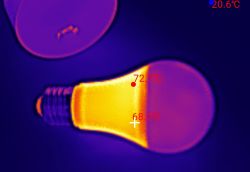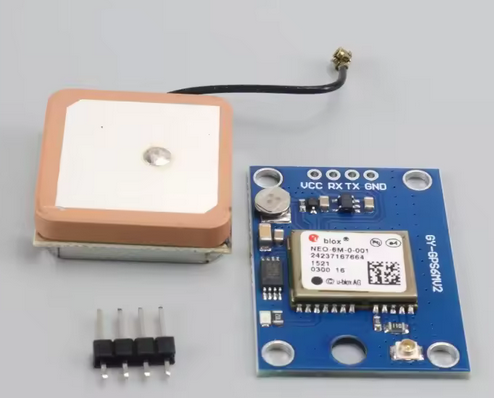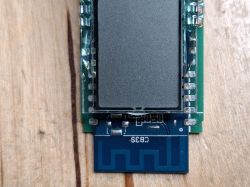Hi! Here is a teardownon of a Moes 3 gang module wifi.
I bought it from: AliExpress
![[BK7231N] Moes MS-104C-1 - Smart Switch Module Wifi 3 gang [BK7231N] Moes MS-104C-1 - Smart Switch Module Wifi 3 gang](https://obrazki.elektroda.pl/6933700700_1677710705_thumb.jpg)
![[BK7231N] Moes MS-104C-1 - Smart Switch Module Wifi 3 gang [BK7231N] Moes MS-104C-1 - Smart Switch Module Wifi 3 gang](https://obrazki.elektroda.pl/3059739800_1677710723_thumb.jpg)
![[BK7231N] Moes MS-104C-1 - Smart Switch Module Wifi 3 gang [BK7231N] Moes MS-104C-1 - Smart Switch Module Wifi 3 gang](https://obrazki.elektroda.pl/8306617700_1677711920_thumb.jpg)
![[BK7231N] Moes MS-104C-1 - Smart Switch Module Wifi 3 gang [BK7231N] Moes MS-104C-1 - Smart Switch Module Wifi 3 gang](https://obrazki.elektroda.pl/4253347900_1677710754_thumb.jpg)
Datasheet:
Module CBU (BK7231N)
Flashing:
I could flash lastest BK7231N using the BK7231Flasher v1.0.6 and a FT232RL FTDI Adapter.
![[BK7231N] Moes MS-104C-1 - Smart Switch Module Wifi 3 gang [BK7231N] Moes MS-104C-1 - Smart Switch Module Wifi 3 gang](https://obrazki.elektroda.pl/5656162600_1677713070_thumb.jpg)
![[BK7231N] Moes MS-104C-1 - Smart Switch Module Wifi 3 gang [BK7231N] Moes MS-104C-1 - Smart Switch Module Wifi 3 gang](https://obrazki.elektroda.pl/1895708800_1677710783_thumb.jpg)
![[BK7231N] Moes MS-104C-1 - Smart Switch Module Wifi 3 gang [BK7231N] Moes MS-104C-1 - Smart Switch Module Wifi 3 gang](https://obrazki.elektroda.pl/9814943300_1677710795_thumb.jpg)
Config:
I bought it from: AliExpress
![[BK7231N] Moes MS-104C-1 - Smart Switch Module Wifi 3 gang [BK7231N] Moes MS-104C-1 - Smart Switch Module Wifi 3 gang](https://obrazki.elektroda.pl/6933700700_1677710705_thumb.jpg)
![[BK7231N] Moes MS-104C-1 - Smart Switch Module Wifi 3 gang [BK7231N] Moes MS-104C-1 - Smart Switch Module Wifi 3 gang](https://obrazki.elektroda.pl/3059739800_1677710723_thumb.jpg)
![[BK7231N] Moes MS-104C-1 - Smart Switch Module Wifi 3 gang [BK7231N] Moes MS-104C-1 - Smart Switch Module Wifi 3 gang](https://obrazki.elektroda.pl/8306617700_1677711920_thumb.jpg)
![[BK7231N] Moes MS-104C-1 - Smart Switch Module Wifi 3 gang [BK7231N] Moes MS-104C-1 - Smart Switch Module Wifi 3 gang](https://obrazki.elektroda.pl/4253347900_1677710754_thumb.jpg)
Datasheet:
Module CBU (BK7231N)
Flashing:
I could flash lastest BK7231N using the BK7231Flasher v1.0.6 and a FT232RL FTDI Adapter.
![[BK7231N] Moes MS-104C-1 - Smart Switch Module Wifi 3 gang [BK7231N] Moes MS-104C-1 - Smart Switch Module Wifi 3 gang](https://obrazki.elektroda.pl/5656162600_1677713070_thumb.jpg)
![[BK7231N] Moes MS-104C-1 - Smart Switch Module Wifi 3 gang [BK7231N] Moes MS-104C-1 - Smart Switch Module Wifi 3 gang](https://obrazki.elektroda.pl/1895708800_1677710783_thumb.jpg)
![[BK7231N] Moes MS-104C-1 - Smart Switch Module Wifi 3 gang [BK7231N] Moes MS-104C-1 - Smart Switch Module Wifi 3 gang](https://obrazki.elektroda.pl/9814943300_1677710795_thumb.jpg)
Config:
"pins": {
"7": "dInput_n;3",
"9": "dInput_n;1",
"15": "dInput_n;2",
"17": "Rel;2",
"24": "Rel;1",
"26": "Rel;3"
}Cool? Ranking DIY







